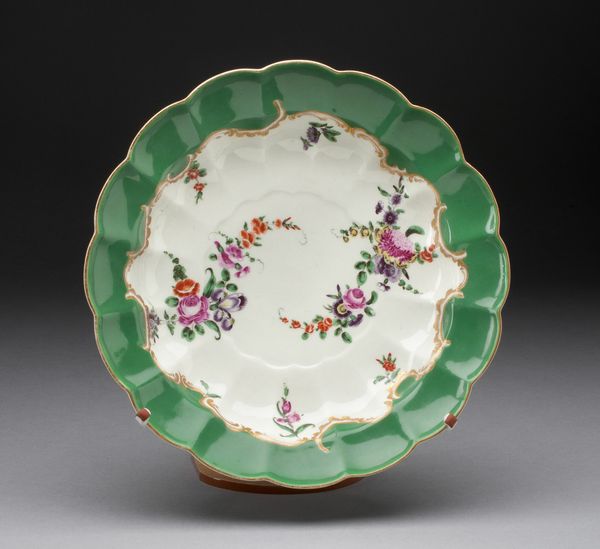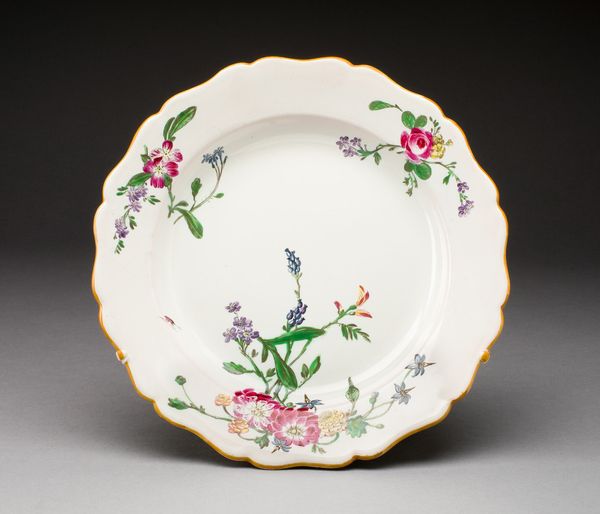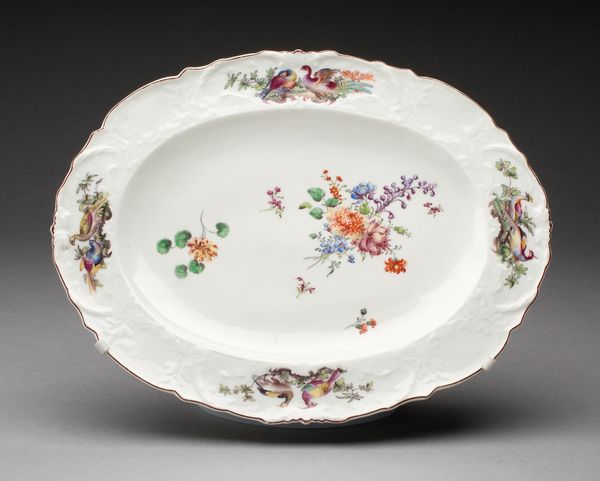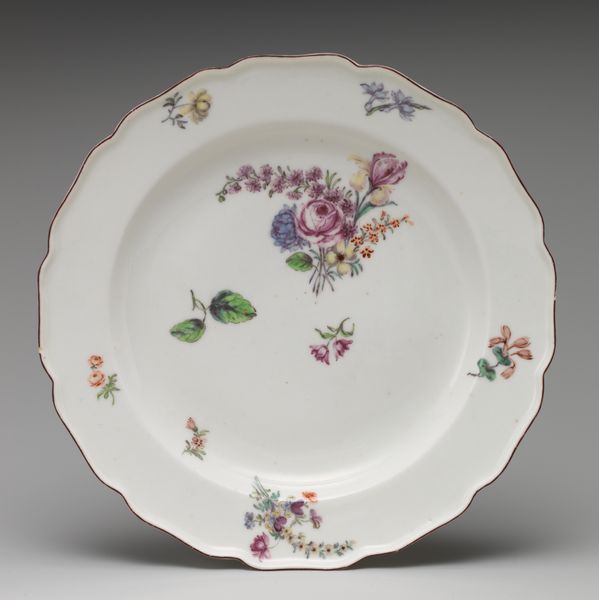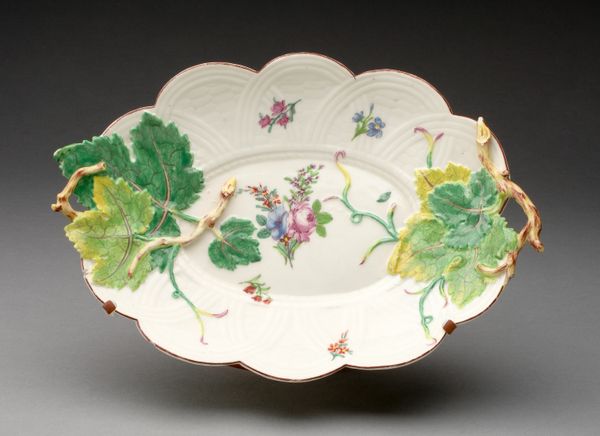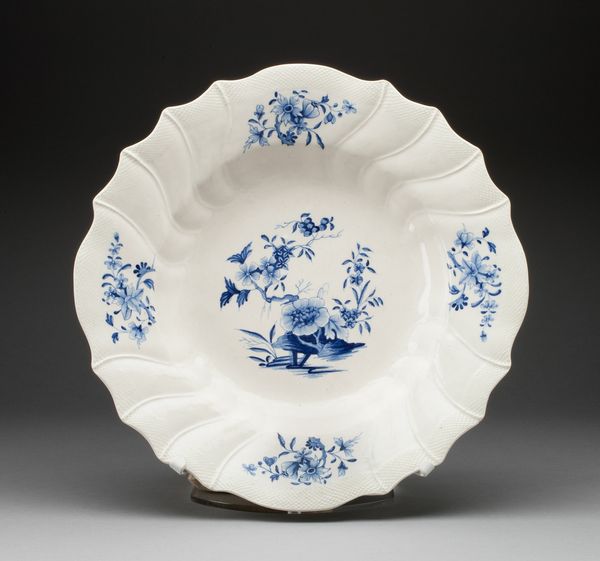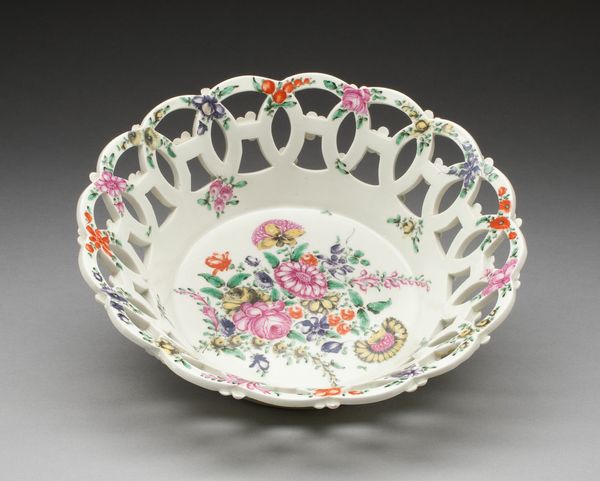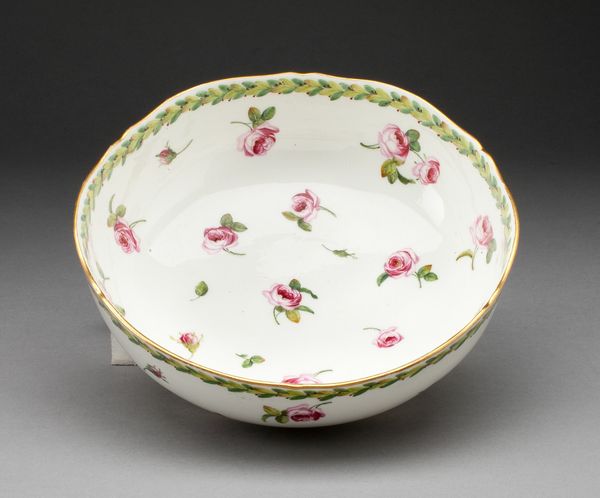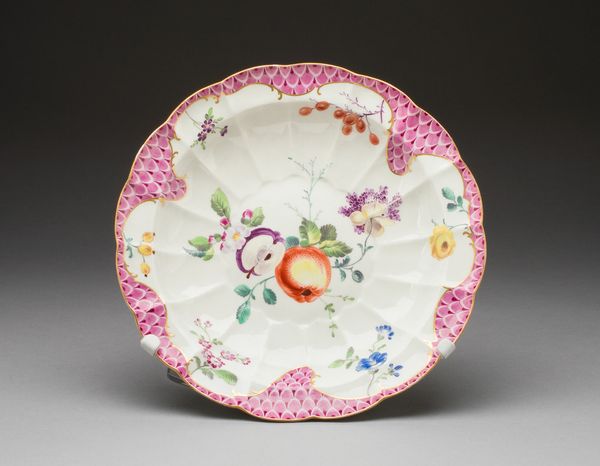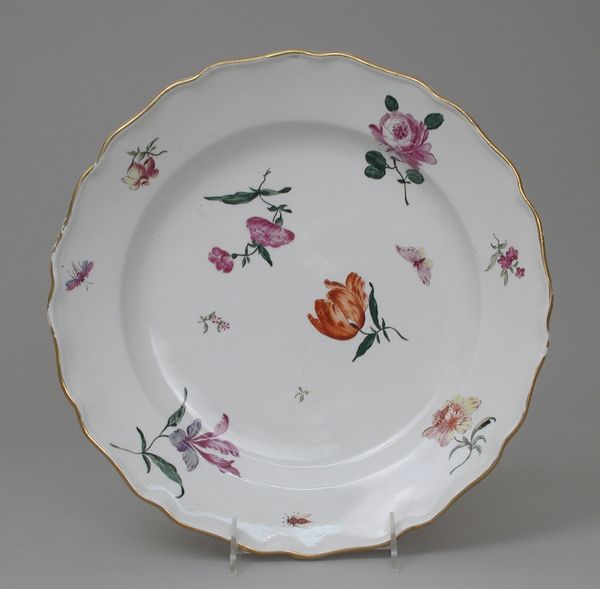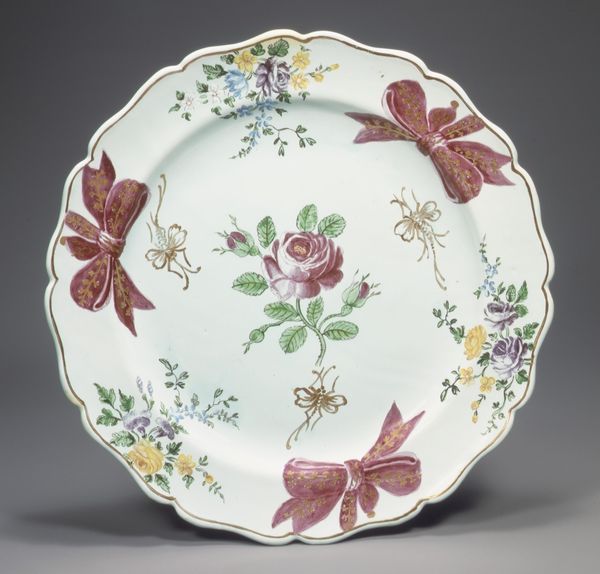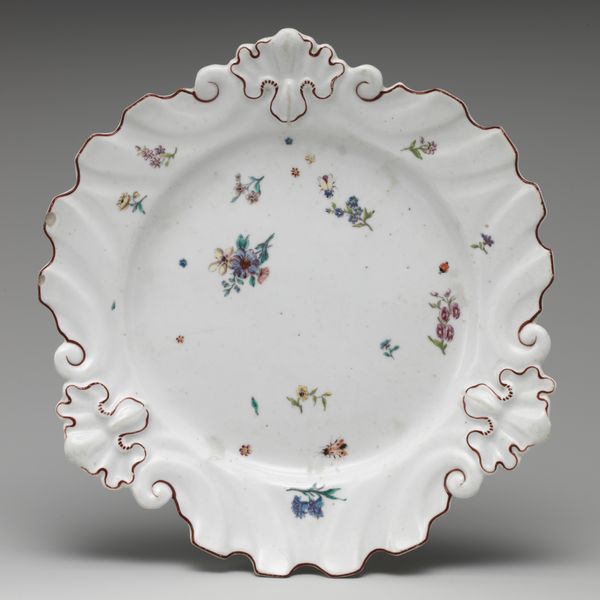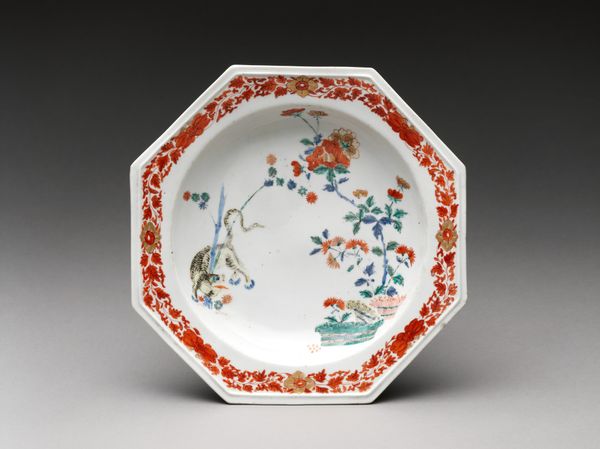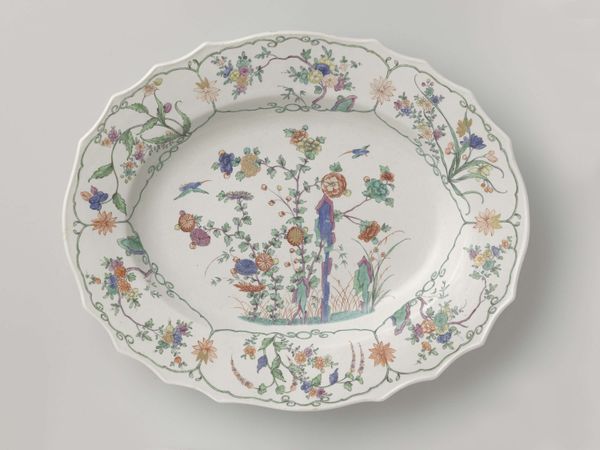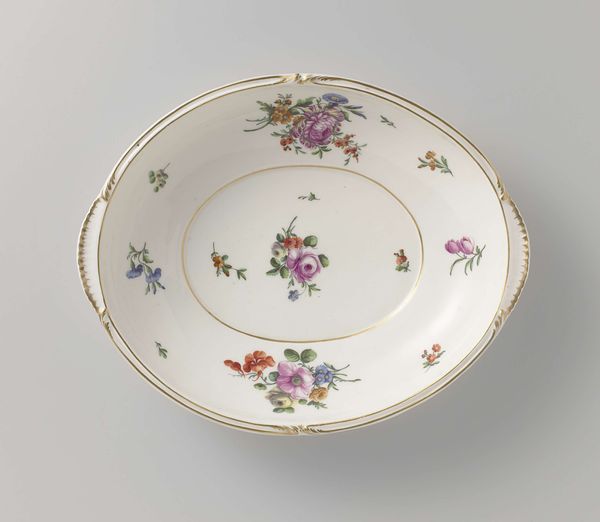
ceramic, porcelain
#
ceramic
#
porcelain
#
ceramic
#
decorative-art
Dimensions: 7 1/2 x 7 1/2 in. (19.05 x 19.05 cm)
Copyright: Public Domain
Editor: Here we have a collection of Wedgwood ceramic plates, dating back to around 1800. They feature delicate green botanical decorations on a white background. What I find really striking is how these seemingly simple porcelain items reflect a wider social history. What do you think? Curator: Exactly! This is where it gets interesting. Forget 'fine art' for a moment. Consider these plates not just as decorative objects, but as products of a complex web of extraction, production, and consumption. What kind of labour went into making them? What raw materials were needed, and from where were they sourced? Editor: Good questions. I suppose clay was fundamental, right? But where would they have sourced that back then? And how did Wedgwood manage to achieve that very specific shade of green? Curator: Precisely. The sourcing and processing of materials – clay, pigments for the green, even the fuel for the kilns – had real social and environmental consequences. Cobalt, for example, a key component for certain greens, often came from mines with brutal labour conditions. Thinking materially disrupts the polite surface of the 'decorative'. It forces us to confront uncomfortable histories embedded in everyday objects. Editor: That's a compelling way to see it. It moves away from just admiring the aesthetic and considers the actual making and consequences of production. It is less about form and function, and more about who was exploited to make it look like this. Thanks, it really shifts my understanding. Curator: My pleasure! Remembering to think materially reminds us of art's grounding in concrete conditions of life and labour.
Comments
No comments
Be the first to comment and join the conversation on the ultimate creative platform.
